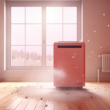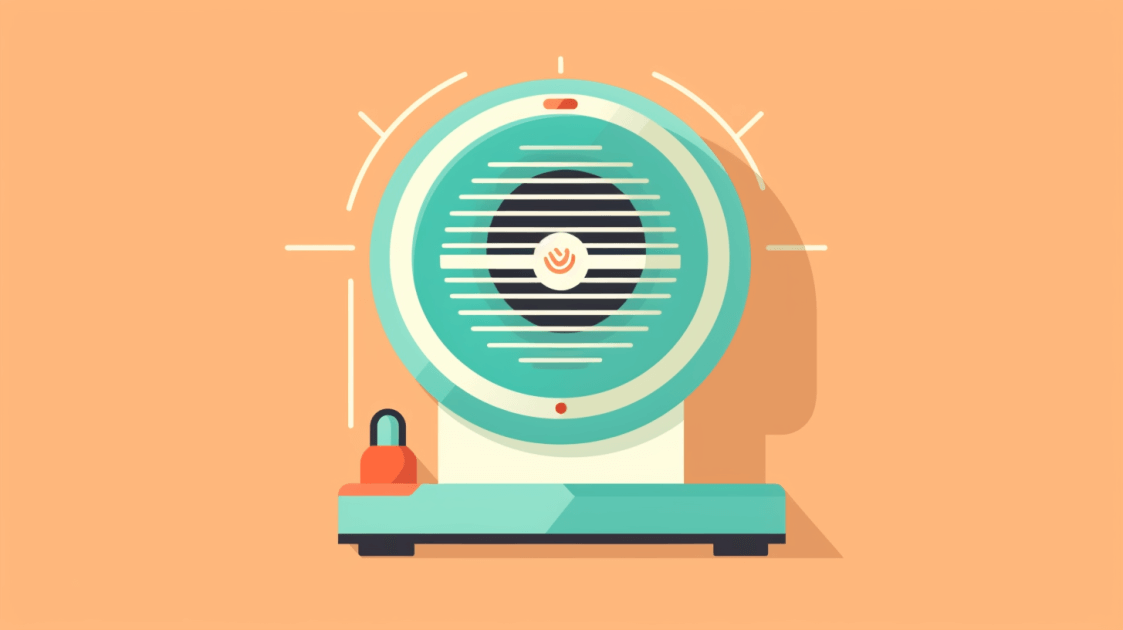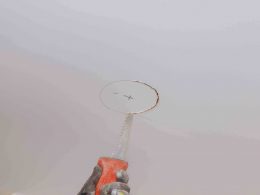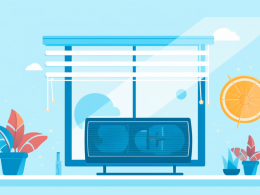In today’s world, advanced technology is an integral part of our daily lives, and it extends even to household appliances we often take for granted. Among these appliances, fans have seen a significant evolution, offering more than just a breeze on a hot day. They’ve gone from simple machines to complex devices incorporating features that enhance our comfort, health, and well-being. One such feature is the ‘Ion’ function, which may have caught your eye on your latest fan purchase. But what does ‘Ion’ mean on a fan, and how does it enhance the value and functionality of a standard fan?
This blog post aims to demystify the ‘Ion’ function on your fan. Through this guide, we’ll delve into the workings of an ion fan, the science behind it, and the benefits it provides. We’ll also help you compare ion fans with regular fans, guide you on choosing the best ion fan for your needs, and provide tips on maintaining your ion fan for optimal performance. By the end of this post, you’ll be well-versed in ion technology, empowering you to make informed decisions and maximize your fan’s potential to improve your indoor environment. So, let’s dive in and unravel the mystery of the ‘Ion’ function on a fan.
Basic Understanding of a Fan
Before we delve into the more complex concept of ions, it is essential to understand the basics of a fan. A fan is a powered machine used to create a flow of air. It works by rotating a number of blades, which are often housed within a casing, to move air. The movement of these blades is generated by a motor that is powered by electricity.
Fans come in various sizes and types, from ceiling fans and desk fans to exhaust fans and tower fans. Despite the differences in design and application, all fans serve the primary purpose of moving air to create a cooling effect. They do this by accelerating the evaporation of perspiration on the skin, which aids in heat removal from the body, making us feel cooler.
Fans also help in improving ventilation, especially in closed spaces, by circulating the air around the room. They help distribute heat more evenly around a space and can aid in removing stale air and odors.
Having understood the basic mechanism and purpose of a fan, let’s now turn our attention to the fascinating world of ions and the role they play in enhancing the functionality of a fan. The following section will serve as an introduction to ions, how they are formed, and their role in our natural environment.
The Role of Ions in General
Ions are molecules or atoms that carry a net electric charge due to the loss or gain of one or more electrons. This process is known as ionization. The ions that have gained electrons and carry a negative charge are called anions, while those that have lost electrons and carry a positive charge are called cations.
In the natural world, ions are formed in several ways. One of the most common ways is through the process of evaporation, especially in places like waterfalls, beaches, and forests, where moving water or moist air tends to create a surplus of negative ions. Natural radiation, lightning, and ultraviolet light from the sun are also sources of ions. This ion generation process contributes to what we often refer to as ‘fresh air.’
Negative ions, in particular, have significant effects on our environment and health. They attach themselves to particles in the air, such as dust, pollen, smoke, and other allergens, causing these particles to become too heavy to remain airborne. As a result, they fall to the ground, cleansing the air we breathe. Negative ions are also believed to produce biochemical reactions in our bloodstream that increase levels of the mood chemical serotonin, helping to alleviate depression, relieve stress, and boost our daytime energy.
Having understood what ions are and how they play a crucial role in our environment, it’s time to understand how this concept is applied in fans, transforming a simple cooling device into a tool that promotes our health and well-being.
The Ion Technology in Fans
Now that we’ve understood the importance of ions in our environment, let’s explore how this concept is applied in fans. Fans with ion technology, often referred to as ionizing fans or ion fans, incorporate a built-in ionizer that generates and disperses ions into the air. This enhances the fan’s basic function of circulating air by also improving the air’s quality.
The ionizing function works through a process known as corona discharge. The fan’s ionizer has a high-voltage electrode, usually in the form of needles or sharp points. When electricity is applied, it creates a small but intense electric field around the electrode. The surrounding air molecules are ionized due to this electric field, which means they lose or gain electrons and become charged. These charged particles, predominantly negative ions, are then expelled with the air the fan circulates.
As they move out into the room, these negative ions attach themselves to airborne particles such as dust, pollen, pet dander, and smoke. Once these particles are charged, they attract other particles and clump together. As these clusters grow heavier, they fall to the ground, effectively being removed from the air we breathe.
This ionization process doesn’t change the feel of the air coming out of the fan, but it does enhance the overall air quality in the room. In the following section, we’ll dive deeper into the benefits of using an ion-producing fan, especially with respect to our health and indoor comfort.
The Benefits of Ion-Producing Fans
Now that we’ve explained the process behind the ionization feature in fans, let’s highlight the multiple benefits of using an ion-producing fan in your home or office.
Enhanced Air Quality
As explained earlier, ionizing fans release negative ions into the air, which attach themselves to airborne particles such as dust, pollen, allergens, and smoke. The particles, once charged, clump together and fall out of suspension in the air, effectively purifying the air you breathe. This process not only cleanses the air but also reduces the chances of problems caused by poor air quality like allergies, asthma, and other respiratory issues.
Health Benefits of Ionized Air
Negative ions have been found to have several health benefits. They help increase the flow of oxygen to the brain, leading to higher alertness and more mental energy. They also help reduce stress, improve mood, and promote overall well-being by increasing the levels of the mood chemical serotonin. This can lead to improved sleep and a sense of calm and focus during your waking hours.
Implications for Allergen Reduction and Overall Comfort
For those suffering from allergies, ion-producing fans can be a game-changer. By helping to reduce airborne allergens like dust, pollen, and pet dander, these fans can help alleviate common allergy symptoms. This makes your indoor environment more comfortable, especially in seasons when allergies are common.
These benefits make ion fans a desirable addition to any home or office. However, as with any technology, it’s important to understand how ion fans compare to regular fans and how to choose the best one for your needs. Let’s delve into that in our next sections.
Comparing Ion Fans with Regular Fans
The primary function of both ion fans and regular fans is to circulate air, providing a cooling effect. But beyond that basic role, ion fans offer additional benefits tied to their ionization feature. Let’s compare these two types of fans to understand their similarities, differences, and overall value proposition.
Similarities and Differences between Ion Fans and Regular Fans
Similarities:
Cooling Effect: Both types of fans effectively circulate air, producing a cooling effect on the skin through evaporation.
Air Circulation: Both fans help in improving ventilation by circulating the air around the room.
Differences:
Air Purification: The most significant difference between the two lies in the ionizing feature of ion fans. While regular fans merely circulate air, ion fans generate and disperse negative ions, which attach to airborne pollutants and help purify the air.
Health Benefits: While regular fans only aid in cooling, ion fans offer potential health benefits, such as reducing stress, improving mood, and promoting overall well-being.
Cost Comparison
Ion fans tend to be costlier than regular fans due to their additional ionizing technology. However, the added benefits of air purification and potential health improvements may justify the price difference for many users.
Energy Efficiency Comparison
The energy efficiency of fans largely depends on the particular model and brand, but in general, the addition of the ionizing feature does not significantly increase the energy consumption of a fan. It’s always a good idea to check the energy rating of the fan model before making a purchase.
In the next section, we’ll provide some practical tips on choosing the best ion fan for your needs, considering factors like your budget, space, and specific health concerns.
How to Choose the Best Ion Fan for Your Needs
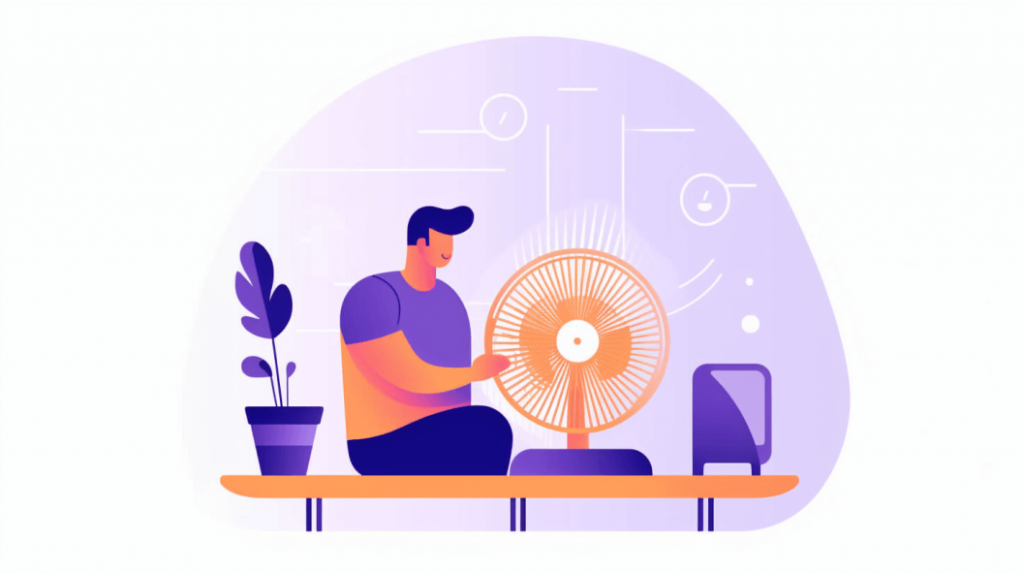
With an understanding of what ion fans do and how they compare to regular fans, you may be considering investing in one. However, with various models and brands available in the market, it can be challenging to determine which one best suits your needs. Here are some key features to look out for and factors to consider when purchasing an ion fan.
Key Features to Look for in an Ion Fan
Efficient Ionizer: The ionizer should be efficient in generating and releasing a high concentration of negative ions for optimal air purification.
Multiple Speed Settings: Look for a fan with multiple speed settings. This feature allows you to control the amount of air circulated based on your personal comfort.
Quiet Operation: Especially for bedroom use, a quiet fan won’t interrupt your sleep or daily activities.
Energy Efficiency: Opt for an energy-efficient model to save on electricity costs.
Factors to Consider When Purchasing an Ion Fan
Space: Consider the size of the space where you’ll be using the fan. Larger spaces may require fans with stronger airflow or multiple fans for effective air purification.
Budget: While ion fans are generally more expensive than regular fans due to their additional features, prices can vary widely among models. Decide on your budget and compare options within that range.
Health Concerns: If you or a family member suffers from allergies or respiratory issues, an ion fan can be especially beneficial. However, you might want to consult with a healthcare professional before making a purchase.
Maintenance: Check what kind of maintenance the ionizer feature might require, such as cleaning or replacing filters.
Maintaining Your Ion Fan
Once you’ve made the decision and purchased an ion fan, it’s crucial to understand how to properly use and maintain it to ensure its longevity and optimal performance. Here are some guidelines and safety precautions to keep in mind.
Guidelines for Using and Maintaining an Ion Fan
Regular Cleaning: Just like regular fans, ion fans accumulate dust on their blades. Regularly dust off the blades and housing with a soft, damp cloth. Avoid using abrasive cleaners or detergents as they may damage the fan’s surface.
Ionizer Maintenance: The ionizer may require specific maintenance. If the fan uses a filter to capture ionized particles, make sure to replace or clean it as per the manufacturer’s instructions. Some fans may have a built-in cleanable filter. Keeping this clean will ensure the fan can effectively purify the air.
Proper Placement: Ensure that the fan is placed on a flat, stable surface and isn’t blocked by objects that can obstruct the airflow. Also, placing the fan near a window or an open area can help it pull in fresh air and distribute it more effectively.
Safety Precautions When Handling Ion Fans
Power Off Before Cleaning: Always make sure to turn off and unplug the fan before cleaning. Never attempt to clean the fan while it is still connected to the power supply.
Avoid Water Contact: Never allow water to get inside the fan, especially the ionizer part, as it can cause electrical shorts or other damages.
Follow Manufacturer’s Instructions: Always follow the manufacturer’s instructions regarding the use and care of the fan. This includes guidelines on cleaning, filter replacement, and any necessary repairs.
Dealing with Common Issues in Ion Fans
Occasionally, you might encounter issues with your fan. Most common problems, like a slowdown in speed or a noisy motor, can often be fixed with simple troubleshooting. However, for more complex issues, especially those concerning the ionizer, it’s best to consult with a professional or contact the manufacturer’s customer service.
Proper maintenance and care can extend your fan’s life, allowing you to enjoy cleaner, fresher air for years to come. Now that you’re equipped with all this knowledge about ion fans, it’s time to enjoy the benefits they bring to your indoor environment!
The Bottom Line
Fans with ion technology offer more than just a cooling effect; they serve as a significant step toward promoting healthier indoor air. The science of ions, while complex, translates into a simple benefit when integrated with fans – enhanced air quality. By producing and dispersing negative ions, ion fans help to purify the air, removing airborne pollutants and potentially improving our health and well-being.
Whether you’re already on the lookout for an ion fan or just discovered this technology, understanding what the ‘Ion’ function on a fan means and its benefits will empower you to make a well-informed decision. Keep in mind the guidelines for selecting an ion fan that best suits your needs, and remember the importance of regular maintenance to ensure its longevity and optimal performance.
As we continue to seek ways to improve our indoor environments and health, ion fans stand out as an innovative and beneficial solution. They remind us that sometimes, the smallest things – in this case, ions – can have a big impact on our comfort, health, and overall quality of life. Enjoy the fresh, ion-enriched air and the benefits that come with it!
Frequently Asked Questions (FAQs)
Q1: What does ‘Ion’ mean on a fan?
A: ‘Ion’ on a fan refers to a built-in ionizer that the fan uses to generate and disperse ions, specifically negative ions, into the air. These ions attach to airborne particles like dust and allergens, causing them to become too heavy to remain in the air, effectively purifying the air in the process.
Q2: Are ion fans safe?
A: Yes, ion fans are generally safe to use. They produce negative ions similar to those found in natural environments like forests or waterfalls. However, it’s always crucial to follow the manufacturer’s guidelines for using and maintaining the fan, especially if it has a built-in ionizer.
Q3: Can ion fans eliminate odors?
A: Yes, ion fans can help to reduce odors. Negative ions can neutralize odorous particles in the air, causing them to fall out of suspension. This can contribute to a fresher-smelling indoor environment.
Q4: Do ion fans use more electricity than regular fans?
A: No, ion fans do not necessarily use more electricity than regular fans. While the ionizer does require power, its consumption is typically minimal. The fan’s overall power usage will depend more on factors like its size, speed settings, and duration of use.
Q5: Can ion fans help with allergies?
A: Yes, ion fans can help with allergies by reducing airborne allergens. The negative ions produced by the fan attach to allergens like dust, pollen, and pet dander, causing them to fall to the ground and out of the air we breathe.
Q6: Do all fans have an ion function?
A: No, not all fans have an ion function. It’s a feature found primarily in fans designed with built-in ionizers. These are often labeled as “ion fans” or “fans with ionizers.”
Q7: Do I still need an air purifier if I have an ion fan?
A: While an ion fan can improve air quality by reducing airborne particles, it may not replace an air purifier, especially for those with severe allergies or asthma. Air purifiers can remove smaller particles and often have filters that can trap bacteria and viruses, which ion fans may not effectively eliminate. For optimal air purification, consider using both an ion fan and an air purifier.
How often should I clean my ion fan?
A: Cleaning frequency depends on usage and the specific model of the fan. Generally, it’s recommended to dust off the blades and housing weekly and to clean or replace filters as per the manufacturer’s instructions. Always refer to the user manual for precise cleaning guidelines.





